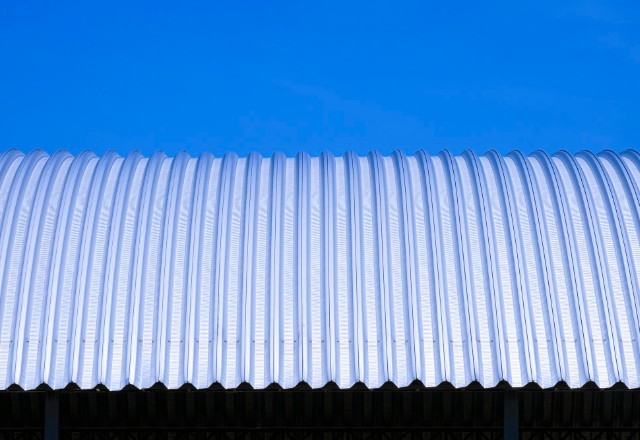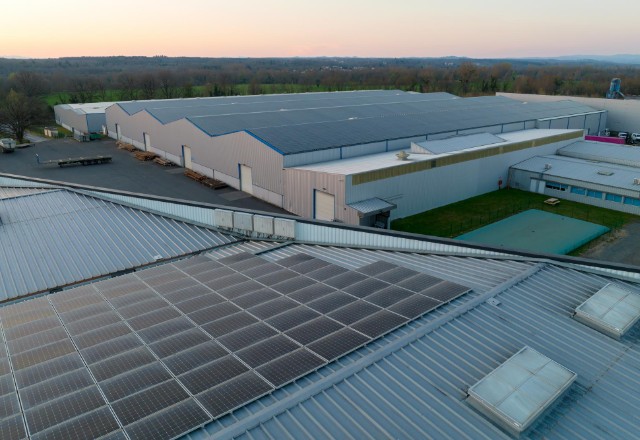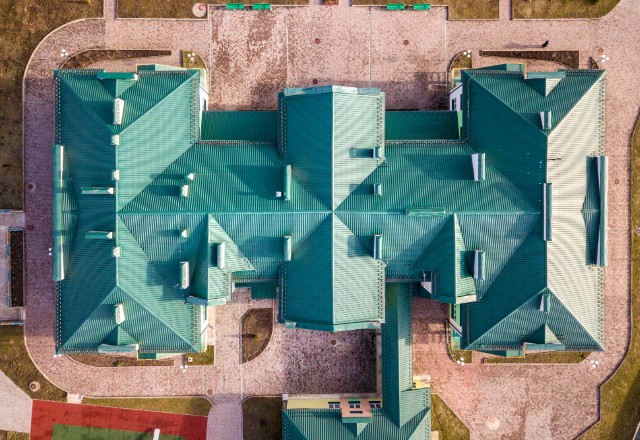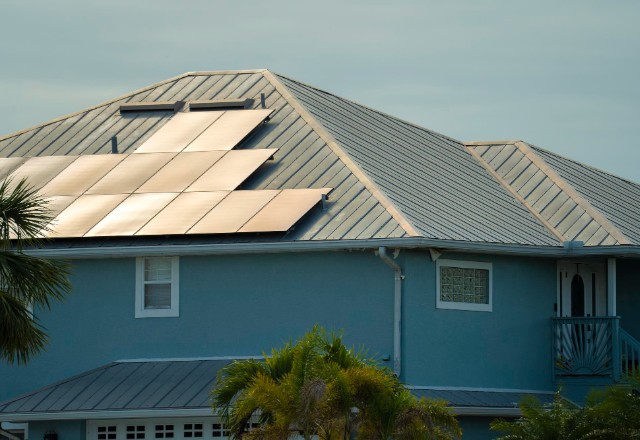The perfect metal roofing project requires more than just careful planning and attention to detail; it also requires the right gauge of material. Gauge is a measure of the thickness of metal panels, and it can make all the difference in a successful roofing project. From corrugated and seam metal roofs to standing seam metal roofs and commercial applications, selecting the ideal gauge will ensure your roof stands strong against any weather conditions. In this article, we’ll discuss why gauge matters for metal roofing projects, different types of gauges available, and how to select the best one for your project. With these tips in mind, you’re sure to find the perfect gauge for your next metal roofing project!
Disclaimer: The information provided in this article is for general informational purposes only and should not be taken as professional advice. When it comes to finding the right gauge for your metal roofing project, our team at Advance Roofing LLC recommends consulting with a knowledgeable and experienced professional. We have been proudly serving the Spokane, WA area for many years with the utmost quality of roofing solutions, and we are always here to help you find the best product for your needs.
What is Gauge?
Gauge refers to the thickness of metal panels and is measured in inches or millimeters. It’s an important factor when selecting the right material for a metal roofing project, as it affects the durability and longevity of the roof. Thicker gauges offer greater strength and protection from extreme weather conditions, while thinner gauges are generally used for aesthetic purposes, such as creating interesting patterns on corrugated roofs. Different types of metals have different gauge ranges; for example, aluminum typically has a range between .019″ and .024″, while steel can range from 14 gauge up to 24 gauge. Ultimately, selecting the right gauge depends on your project’s individual requirements and application; it’s important to consider factors such as local climate, building codes, and design goals when making a decision.
Ultimately, selecting the right gauge for your metal roofing project is essential for ensuring its long-term durability and strength. In the next section, we’ll explore why gauge matters when it comes to these projects – find out more!
Types of Metal Roofing

Metal roofing is a popular choice for many homeowners due to its durability, energy efficiency, and aesthetic appeal. There are several different types of metal roofing available to suit various needs and budget considerations. The most common types of metal roofing include aluminum, steel, copper, zinc, and tin. Each type has its own unique benefits for strength and durability as well as special features such as fire resistance or noise reduction.
- Aluminum roofs are known for their affordability and lightweight construction while steel roofs are often preferred for their strength and longevity.
- Copper roofs provide exceptional beauty with an elegant finish but can be costly.
- Zinc roofing offers the long-term protection of a metal roof combined with a low maintenance surface that will not corrode or oxidize over time.
- Finally, tin roofs offer a unique look with the added benefit of being rust-resistant.
When choosing the right type of metal roofing material for your project, it’s important to consider factors such as local climate conditions, building codes, design goals, and budget constraints.
No matter what type of metal roofing you choose, you can rest assured that it will perform well for years to come. With its fire resistance, energy efficiency and aesthetic appeal, metal roofing is a great choice for any home. And if you’re looking for an even more rugged and durable option, stay tuned for the next section on Corrugated Metal Roofing!
Corrugated Metal Roofing
Corrugated metal roofing is an increasingly popular choice for homeowners due to its incredible strength and durability. Unlike other types of metal roofing, corrugated metal has a wave-like shape that adds extra rigidity and stability. This makes it ideal for areas prone to heavy rain or snowfall, as well as high winds. Corrugated metal also comes in a variety of colors and finishes to match the aesthetic of any home. It’s a great choice for those who want the look of a traditional roof without sacrificing durability or longevity. Plus, corrugated metal is fire resistant, energy efficient, and easy to maintain over time. So if you’re looking for an affordable yet rugged option, consider investing in corrugated metal roofing today!
Seam Metal Roofing
Seam metal roofing is becoming a popular choice among homeowners due to its sleek and modern look. The panels are designed with a ribbed pattern that creates crisp lines and adds interest to the roof’s appearance. Seam metal also comes in a variety of colors and finishes, so you can easily find the perfect match for your home. But this type of roofing isn’t just about looks—it’s incredibly durable and weather-resistant, making it an ideal option for any climate. Plus, seam metal is fire resistant and energy efficient, so you can rest assured knowing your home is well protected from all kinds of danger. Invest in seam metal roofing today and enjoy the added security and beautiful aesthetic it provides!
Standing Seam Metal Roofs
Standing seam metal roofs are a great option for homeowners who want top-of-the-line protection and style. Unlike traditional shingle roofs, standing seam panels are made from pre-painted aluminum or galvanized steel, making them incredibly durable and resilient to various weather conditions. Plus, they come in a variety of colors and finishes so you can easily find the perfect match for your home’s aesthetic. Standing seam is also fire resistant and energy efficient—a major bonus considering how much money it can save on energy bills! And while they may cost more upfront than other roofing materials, standing seam metal roofs have a longer lifespan that makes them an economical choice in the long run. Invest in standing seam metal roofing today to enjoy all the benefits it has to offer!
Frame Structure and Commercial Applications

Frame structure metal roofing is a great choice for commercial applications, such as warehouses and factories, due to its strength and rigidity. It’s made up of several interlocking metal panels that are connected at the edges to form a single, continuous sheet. This type of roofing offers superior protection from the elements and is incredibly durable, withstanding extreme temperatures and weather conditions. Plus, it’s fire resistant and energy efficient which can help reduce energy costs in the long run. Frame structure metal roofs are very customizable too—you can choose from a variety of colors and finishes that fit your building’s aesthetic perfectly. Invest in frame structure metal roofing today to get all these benefits!
Different Types of Gauges for Metal Panels
When it comes to metal roofing, the gauge of the metal panels is an important factor to consider. It affects the strength and durability of the roof, as well as its overall cost. There are several different types of gauges available for metal roofing panels, and each one has its own unique benefits.
The most commonly used gauges for residential applications are 24-gauge, 26-gauge, and 29-gauge:
- The 24-gauge panels offer superior protection from weather elements and are more resistant to dents and punctures than thinner panels.
- The 26-gauge panels provide great value while still being durable enough to last a long time.
- And finally, the 29-gauge panels are best suited for lighter weight roofs with less traffic or load on them. Each gauge offers something different, so be sure to pick the right one for your project!
No matter the application, metal roofing is a great option for many homes and businesses. With its various gauges, you can find the perfect metal roofing panels to get the job done right. But if you’re looking for something more heavy-duty, don’t worry – there are even heavier gauges available for commercial buildings and steep slope roofs. Read on to learn more!
Heavier Gauges for Commercial Buildings and Steep Slope Roofs
For large commercial buildings and steep slope roofs, heavier gauges are often the best choice for metal roofing. These thicker panels offer increased protection from weather elements, greater durability, and a longer lifespan. The most common gauges for these types of projects are 22-gauge, 20-gauge, and 18-gauge:
- The 22-gauge panels offer great value while still providing strong protection against harsh weather conditions.
- The 20- gauge panels provide even more strength and durability.
- The 18-gauge panels are ideal for applications with heavy traffic or load on them.
No matter which type of gauge you choose, these heavier gauges will ensure your metal roof is built to last.
Understanding the Difference in Material Thickness

Understanding the difference in material thickness is an important factor to consider when selecting a metal roofing product. The gauge of a metal roof refers to its thickness, and is indicated by a number. Generally speaking, the higher the number, the thicker the material. However, it’s important to note that there can be variations between manufacturers due to differences in material composition and other factors. As such, it’s essential to always check with your supplier or manufacturer for exact specs. Additionally, you should also consider the climate conditions where your home is located as this can play a role in determining the appropriate gauge for your project. With all these factors taken into account, you’ll be able to find the perfect balance between quality and cost-effectiveness when choosing a metal roofing product.
Oil Canning in Different Gauge Materials
Oil canning is a phenomenon that can occur in metal roofing and other metal products. It is the appearance of wavy lines or ridges on a flat surface, similar to the body of an old fashioned oil can. While it does not affect the performance of the roof, it may be undesirable from an aesthetic standpoint. The likelihood for oil canning increases with thinner gauge materials, so it’s important to consider this when selecting a metal roofing product. Thicker gauges will have less risk for oil canning but may also cost more. Additionally, there are certain panel designs that will help minimize its occurrence such as corrugated ribbed panels or standing seam roof systems. Ultimately, you should consider both your budget and desired aesthetics when deciding which gauge material to select for your project.
Selecting the Right Type of Gauge for Your Project
When selecting the right gauge for your metal roofing project, it’s important to consider both your budget and desired aesthetic. There are several types of gauge materials available, and each has its own benefits and drawbacks. Generally speaking, thicker gauges will cost more but have less risk of oil canning while thinner gauges may be more affordable but could be susceptible to this phenomenon. Consider the design of the panel as well, as certain profiles are better able to minimize oil canning than others. If you’re unsure which option to choose, seek out advice from a professional contractor who is familiar with metal roofing projects. With their help, you’ll be able to find the perfect gauge for your project that meets both your needs and budget.
Installation Tips to Make Sure You Get the Most Out of Your Metal Roofing Project

Installing a metal roof can be intimidating for even the most experienced DIYer. To ensure that your project goes smoothly, it pays to take the time to plan ahead and follow a few simple tips.
- First, make sure you have the right tools and materials on hand. Invest in quality fasteners, such as stainless steel screws or rivets, and remember that size matters when it comes to choosing them correctly.
- Additionally, use a level and straight edge to ensure that your panels are installed evenly and securely. If you’re unsure of how to measure and cut panels properly, consult with a professional contractor who is familiar with metal roofing projects.
- Finally, don’t forget about safety! Wear protective eyewear and gloves when working with metal roofing panels, and always make sure someone is nearby in case of an emergency.
Following these tips will help give you peace of mind while ensuring that you get the most out of your metal roofing project.
Installing a metal roof can be a daunting task, but with the right planning and preparation, you’ll have a beautiful and durable roof that will last for years to come. Now that your metal roof is installed, it’s time to learn about the maintenance and care needed to keep it looking great!
Maintenance and Care After Installation

No matter how good of a job you do with installation, the longevity and beauty of your metal roof will depend on the maintenance and care it receives after installation. Regular inspections and cleaning is essential to prevent rusting, dents, and other damage from occurring.
To start, inspect your roof every six months or so for signs of wear or damage. If you notice any, contact a professional as soon as possible to fix the problem before it gets worse. Routinely cleaning your metal roof is also important to keep it looking its best. You can use a pressure washer set on low power to remove dirt and debris without causing any damage. Make sure to avoid using harsh chemicals or abrasive brushes that may scratch your roof’s surface when cleaning. Taking proper care of your metal roof after installation will ensure that it looks great year-round!
Conclusion
When it comes to finding the perfect gauge for your metal roofing project, there are a few factors to consider. First and foremost, you’ll want to determine the type of metal you’re working with, as well as its thickness. Then, you’ll need to figure out the weight limit of your roof and how much load it will be required to bear in order to ensure its longevity. Finally, consult with an experienced metal roofer who can advise you on the best gauge for your project. With careful consideration and expert guidance, you can rest assured that your metal roof will be installed correctly and provide lasting protection against the elements!



 509-201-4190
509-201-4190
